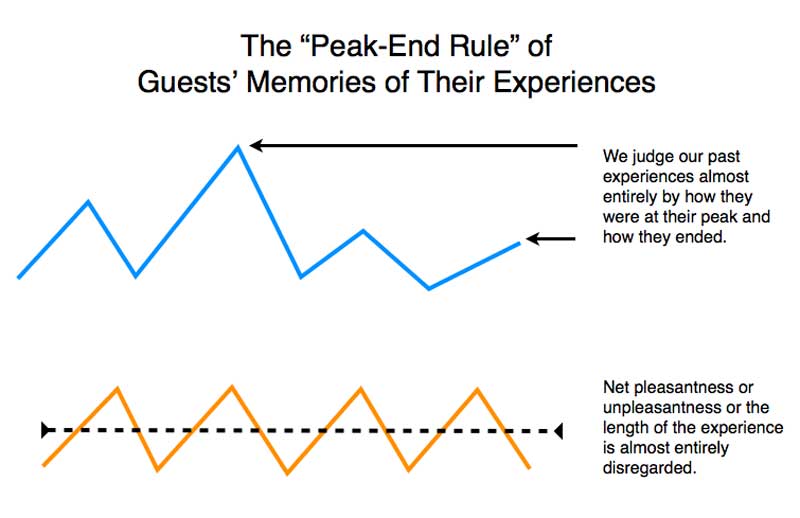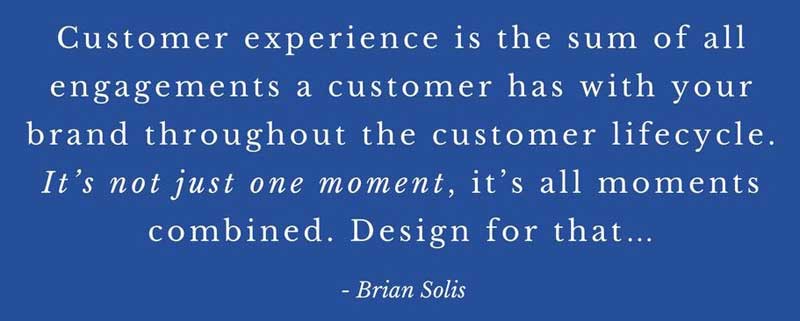
Vol. XVII, No. 3, March 2017
- Editor's corner
- The snackification of food culture; its implications for CLVs
- Foundations gets IAAPA Certified. Next program May 10-12 in New Jersey
- More adults living in households without children
- Consumer loyalty & customer satisfaction
- Cinemas continue attendance decline but are fighting back
- Binge watching is for lovers
- What forms & shapes a positive memory of a visit to a CLV?
- Shooter-tainment arrives
- The modern family: why children rule
What forms & shapes a positive memory of a visit to a CLV?
There are many myths (now known as alternative facts) in the bricks-and-mortar consumer industry, including ones that unfortunately prevent many community-leisure-venue (CLV) operators, including FECs and bowling-based venues, from optimizing both the guest experience and guests' positive memories of their visit. One is, “First impressions count.” This often leads operators to spend excessive money and management effort on the design of the first impression when entering the venue, both for the physical environment and operations. In the retail industry, think of the Walmart greeter as one example.
There is no question that first impressions are important. However, first impressions start way before entering a facility. They very often start with the CLV's and FEC's website as well as online customer reviews. If those pass muster, then the next first impression is the exterior of the facility. The attractiveness of the parking lot and the building can easily determine whether non-customers driving by have a positive or negative impression of the business, determining whether they might give the business a try.
A study in the retail industry by Morpace Omnibus, a market research firm, shows that a negative impression of the external appearance of a business will cause consumers to avoid it. More than two-thirds of consumers said they avoided visiting a business for the first time based on its external appearance. One-half (52%) said they avoided a business all together because it looked dirty from the outside. One-third chose not to enter a business because it “didn't look like a place I would normally shop.” Although those consumers couldn't pinpoint specifically why they didn't want to shop there, it was something about the appearance that gave them pause (a mismatch to their socioeconomic-lifestyles could easily be a factor).
First impressions can also set the mood of entering guests. However, the saying first impressions count seems to imply that it creates the lasting impression of the visit after the guest has left. A large body of research in the field known as behavior economics tells us first impressions aren't really important in the memory that people form of an experience. The research shows that what is called the “peak-end rule” determines what we remember about an experience and how we judge it, whether positively, negatively or not at all memorable. The peak-end rule says our memory of an experience is determined almost entirely by two things:
- How we feel when the experience is at its peak (most intense emotional point - good or bad), and
- How we feel at the end of the experience.
We rely on these two-part summaries to form our memory of how we felt about the experience. It's a memory shortcut the brain uses.
We don't remember or judge an experience by the total sum or the average of every moment of its duration.

The peak-end effect suggests that when prioritizing a guest experience strategy, it's better to build a higher emotional peak, an “aha” moment, rather than reduce the number of minor low moments. It's especially important to get first-time user to experience an emotional peak - they may not come back if the lows are what they remember.
When we recall an experience and how it made us feel, it turns out that its overall length isn't terribly important. The most frequently cited study on this was on patients undergoing the painful procedure of a colonoscopy with either little or very light sedation who were subjected to a few extra minutes of lesser pain at the end of the procedure. Overall, those patients rated the experience as less painful and less unpleasant than others, even though they had been in pain longer. Other studies have found similar results for stimuli like watching film clips of playful puppies and soothing landscapes -; a pleasant experience isn't recalled later as more pleasurable just because it lasts longer.
What matters far more is the intensity of sensation, whether it's excitement or pain or contentment. And it's not the overall average of the experience that people remember, but how they felt at the most intense moments, combined with how they felt right as the experience ended. Thus, the “peak-end rule.”
So what really matters about the memory of visiting CLV is the emotional intensity of the experience at its peak combined with what guests experience at the end, rather than the first impression. Even if a minor part of the experience isn't a good one, people may not remember that part if the peak was good and the visit ended happily.
Usually offering a great peak experience isn't a problem for well-managed entertainment-focused venues. The main attractions themselves, such as laser tag, go-karts or bowling can generate a good peak experience. Of course this all depends on avoiding the peak to be some unpleasant experience. Very often it's the end of the visit that needs attention. If the end of the experience is a stop at the redemption counter on a busy day, it can make for a frustrating and unpleasant end experience. If children are involved, they often feel rushed, the counter is crowded so they can't roam back and forth to study the prize selection, and for young children, they can't see over the counter. And the worse it gets for the children, the more their parents are frustrated and annoyed. Re-engineering the experience with a redemption store design can overcome these problems and create a good end experience.
If the last part of the visit is dining, that perpetual wait for the check when the waitperson seems to have disappeared can leave a bad last impression. Here, staff training becomes critical. The end of birthday parties can also be unpleasant if the experience is not properly engineered. Entertainment venues need to focus on assuring that the end of the guest's visit, especially for the birthday child and her parents, is a good experience to assure an overall positive impression and pleasant memory.
There's also a human bias that comes into play in forming the memory of an experience, negative bias - humans have a greater recall for unpleasant memories compared to positive ones.
A psychology professor named John Gottman conducted a now-famous study, which found that the strongest predictor of success in long-term relationships is the ratio of positive to negative moments that a couple experiences during time spent together. He defined a moment as the few seconds that it takes our brain to store an experience in memory; moments have different intensities and can be labeled positive, neutral, or negative. A 5:1 ratio or greater of good to bad means the couple has a good shot at staying together for the long-run. Later research by Marcial Losada and then Barbara Fredrickson found a similar phenomenon, with the required ratio needing to be 3:1 to 6:1. The research findings have been shown to predict everything from brand affinity to workplace satisfaction to divorce with remarkable accuracy.
Think of your user experience as a collection of moments. Is the experience delivering at least three positive moments for every one that a user might find negative or annoying? Negative moments might include slow website load times, slow service, dirty floors, rude staff, the possibilities unfortunately are endless. Pay special attention to the ratio for a guest's first visit. If it's too low, you will have lost the opportunity for repeat business.
Optimizing the guest experience at the peak time and also at the end of the visit and keeping the ratio of good to bad at least 3:1, and ideally 5:1 or 6:1, will result in guests being the happiest and having fond memories of the visit, essential for positive word-of-mouth, especially on social media, and repeat business. And remember, there are many opportunities for first impressions even before someone visits for the first time, so make sure all those experiences, such as the website, social media or phone calls with staff, all meet these same rules.

Vol. XVII, No. 3, March 2017
- Editor's corner
- The snackification of food culture; its implications for CLVs
- Foundations gets IAAPA Certified. Next program May 10-12 in New Jersey
- More adults living in households without children
- Consumer loyalty & customer satisfaction
- Cinemas continue attendance decline but are fighting back
- Binge watching is for lovers
- What forms & shapes a positive memory of a visit to a CLV?
- Shooter-tainment arrives
- The modern family: why children rule


